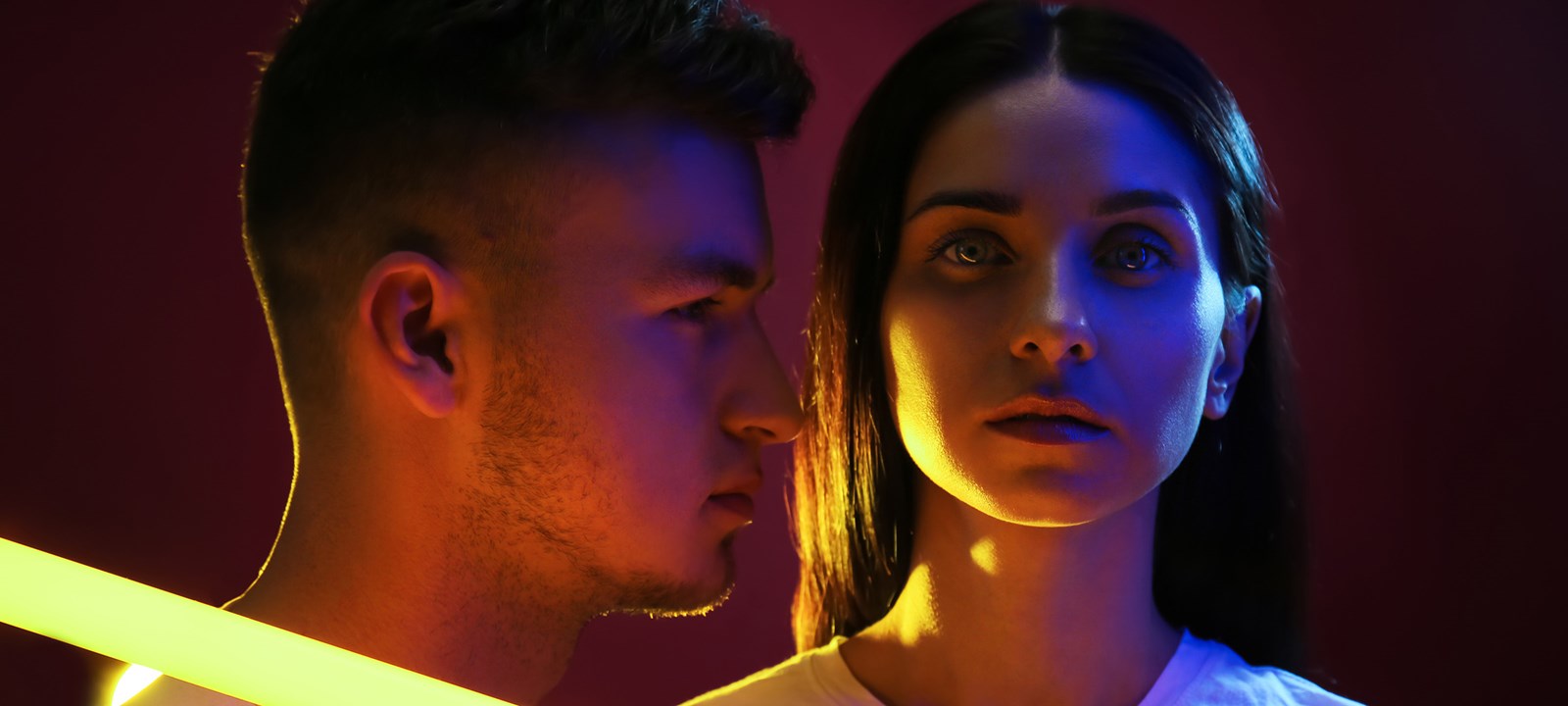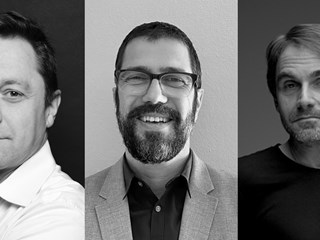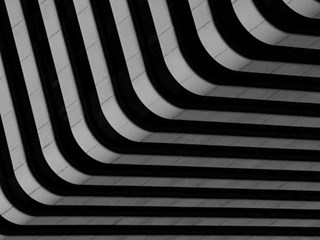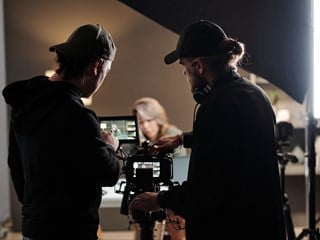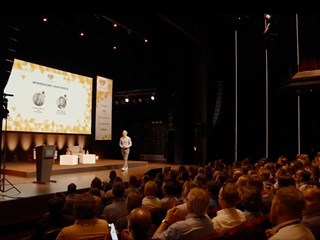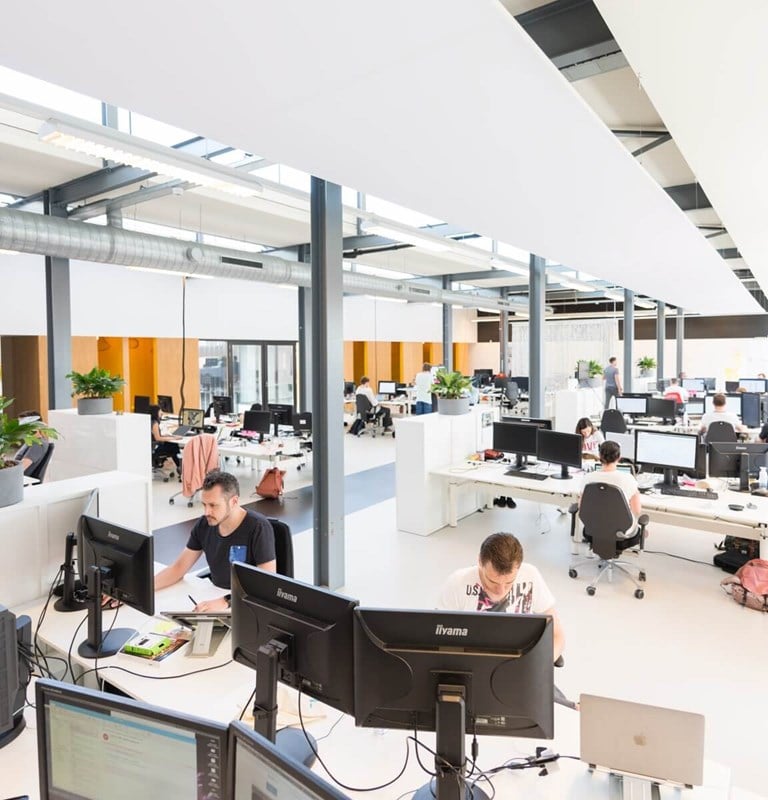December 16, 2016
After 15 years of designing for flat digital platforms, learning to think creatively in 360 degrees was a big and exciting change. Much to my surprise, it was more intuitive than I thought. As it turns out, my skills as a digital designer are very useful when it comes to designing in virtual reality. That’s not to say there haven’t been a few bumps along the road!
Fundamental design principles definitely helped me through the initial process; but some things are just different when your user is fully immersed.
When you’ve been creating in one media for a long time, transitioning to a new one is tricky. It’s really important to put your mindset back into learning mode. Being on a constant learning curve is a big part of designing digital experiences - it’s part of the job: you have to love the ride!
For me, working in a field that offers constant challenges and changes is 100% part of the fun.
What’s different when designing in VR?
Here are my top 3 observations:
1 - Triggering emotions
Creating a particular scene and setup in this immersive media generates an instant emotional response. But to create emotion in virtual reality, you need a lot more than just visuals.
When designing a website, the homepage is the most important space—it’s the first thing the users see, and it defines whether or not they’ll continue to explore. In VR, we call this “the first view”. In a 360° environment, your first 90 degrees have to be impactful to create that “wow!” effect. You might need to pull out a couple of extra tricks and add some skills to your roster because it’s so much more than images. Think about sound (music, sound effects, voices) to build a credible environment.
You could and should also add delightful and surprising moments to keep the “wow!” effect going throughout the experience. For example, any object that starts out far away and moves very close to the user will trigger emotion.
Look up and see the falling rain: it’s simply magical!
3D spaces are like ‘choose your own adventure’ novels—you have to create hints and clues as to what to do next. You need to encourage users to get out of their comfort zone!
2 - Interactivity: familiarizing users with a new medium
Getting them used to interacting with a large, all-encompassing space and its depth, and also learning how to teleport is one of the most challenging parts of this new medium. Building a user interface that is intuitive means keeping it natural. Choices of props and setup will help the user determine what interactivity may be possible in your 360-degree world. Perhaps a book on a desk can be one element of the navigation menu, for example. Putting objects just out of reach is one way I found to be successful for inducing interaction. Give the user small tasks that require micro movements to get them to move around. Ease them out of their hesitation.
This reminds me of the old days of struggling to get website users to scroll. We used to add arrows and other visual aids to make them move down the page and follow the flow of content. VR presents the same types of challenges. For most people, virtual reality is new. They feel glued to the gear and can’t immediately grasp the idea of physically turning around, or taking a step with their own legs. You have to give them clues and incentives to make them move around and explore all the beautiful content you’ve created for them!
Turn around and take a look behind you!
In one of our projects, we added footprint icons on the floor, hoping people would move towards that spot. Those footprints led to an open door and a voice over telling the user to step in. Looking back, maybe we should have animated the footprints from the user to the door to get them moving even more naturally.
Don’t get me wrong, some people are so natural at it that they transform into a character from Minority Report with complete ease!
3- Embracing spatial UI or no UI at all
As a designer for VR, you’re at a crossroads between being the architect and the visual artist. You’ve always been shaping visuals in a way that conveys emotions and balances the space. In the 360-degree environment of VR, you’re required to continue doing just the same.
The main difference in a virtual 3D space is about getting the user comfortable in a new universe where natural behaviours in real life are being replicated. And you want to keep that immersive feeling and keep the UI as simple as possible.
What are the most interesting visuals to include up front? What is the first task you need users to do? What catches users’ attention? Make this your focus as well. Use what is obvious. Work with what is working. Work with what is natural. That’s what you want to mimic to favour immersion. Creating that “real” feeling is the best UI you can achieve. For example, if you show your users a campfire, give them a stick to pick up so they can roast some marshmallows, because that’s the first thing you want to do. (Oh! I would love to integrate this to a VR camping experience we worked on!)
That moment when your user is so immersed that she feels comfortable sitting by your 3D campfire ;)
If you’re a Visual Designer, you can be a Designer in VR
Don’t limit yourself to the space you’re used to as a graphic designer.
Here are in random order the skills you need to cultivate:
- You are a communicator.
- You are creative.
- You explore outside of your current limits and established comfort zones.
- You know how to get to the “big idea”.
- You know how to use visual language to convey emotions and create and tell stories.
- You are used to working with UX designers, copywriters and strategists.
- You know what should be communicated: you understand the message, and you are part of creating that message.
Get out there and try new things! Take out those old pencils or your new stylus and draw the space, the story, the interactions. When you sketch, add some color in and become a storyboardist.
Most of all, make the most of your aesthetic and graphic design sense to create 3D spaces that people will enjoy exploring.
